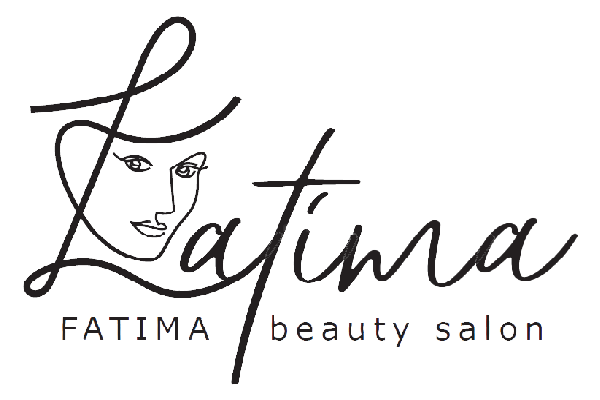Permanent eyebrow makeup and 3 things you should know
In this article, we are talking about permanent eyebrow makeup, which nowadays many women are interested in doing this makeup on their own eyebrows.
What you read in this article:
- What is permanent makeup?
- Why should we do permanent makeup for eyebrows?
- Does permanent makeup for eyebrows disappear?
- Care after permanent makeup for eyebrows?
- What are the best ingredients for permanent eyebrow makeup?
- Is it important to have expertise for permanent eyebrow makeup?
What is permanent makeup?
Permanent makeup, also known as micropigmentation or cosmetic tattooing, is a cosmetic technique that involves the application of pigments to the skin’s dermal layer using various tattooing methods. The purpose is to enhance or mimic the appearance of makeup, such as eyeliner, eyebrows, and lip color. Unlike traditional makeup that needs to be applied daily, permanent makeup is designed to last for an extended period.
Common procedures in permanent makeup include:
- Eyebrow Tattooing:
- Microblading: A technique that involves the use of a manual handheld tool to create hair-like strokes for a more natural look.
- Powder Brows: Involves creating a soft, powdered appearance for the eyebrows.
- Eyeliner Tattooing:
- Defines the eyes by adding pigment along the lash line. It can be applied to the upper and lower eyelids.
- Lip Tattooing:
- Lip Liner: Defines the lip shape.
- Full Lip Color: Adds color to the entire lip area.
Permanent makeup can be beneficial for individuals who have allergies to traditional makeup, those with visual impairments, or those seeking a long-lasting solution for their makeup routine. However, it’s essential to consider the following:
- Permanence: Despite the name, “permanent makeup” does not last forever. Over time, the pigments may fade, and touch-up sessions may be required.
- Experience and Expertise: The success of permanent makeup largely depends on the skill and expertise of the technician performing the procedure. It’s crucial to choose a qualified and experienced professional.
- Aftercare: Proper aftercare is essential to ensure the best results. This may include avoiding sun exposure, using recommended ointments, and following any other instructions provided by the technician.
Before deciding to undergo permanent makeup, individuals should thoroughly research the procedure, understand the potential risks and benefits, and choose a reputable and skilled professional for the application.
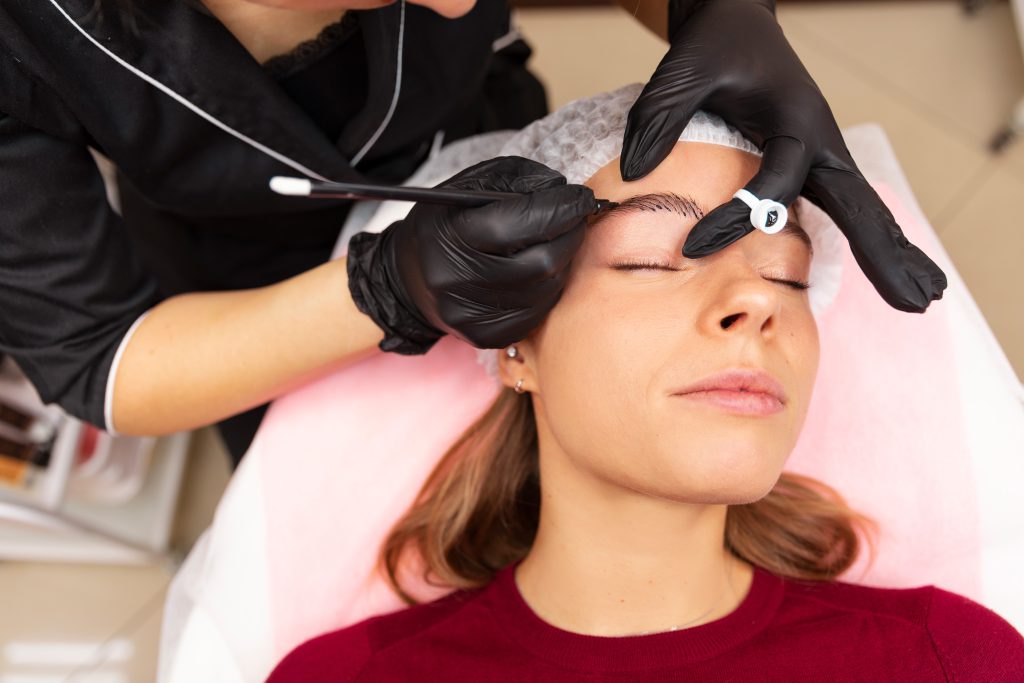
Why should we do permanent makeup for eyebrows?
People opt for permanent makeup for eyebrows for various reasons, and the decision is often based on individual preferences and lifestyle. Here are some common reasons why individuals choose to have permanent makeup applied to their eyebrows:
- Sparse or Thinning Eyebrows:
- Individuals with naturally sparse or thin eyebrows may choose permanent makeup to enhance the appearance of fuller, more defined brows.
- Hair Loss Conditions:
- Certain medical conditions, such as alopecia or chemotherapy, can result in eyebrow hair loss. Permanent makeup offers a solution to individuals looking to restore the appearance of eyebrows.
- Time-Saving Convenience:
- Permanent makeup eliminates the need to spend time each day applying and reapplying eyebrow makeup. This can be especially appealing to those with busy schedules or those who find the daily makeup routine time-consuming.
- Allergies or Sensitivities:
- Some individuals may have allergies or sensitivities to traditional makeup products. Permanent makeup provides a long-lasting solution without the need for daily applications of conventional cosmetics.
- Athletic or Active Lifestyle:
- People who lead active lifestyles, such as athletes or those who frequently engage in water activities, may choose permanent makeup for its water-resistant and smudge-proof qualities.
- Cosmetic Enhancement:
- Permanent makeup allows individuals to enhance the shape, color, and symmetry of their eyebrows. This can be particularly appealing to those looking for a more defined and polished look.
- Scar Camouflage:
- Permanent makeup can be used to conceal scars or imperfections in the eyebrow area, providing a more aesthetically pleasing appearance.
- Aging and Changes in Hair Color:
- As people age, eyebrows may lose their natural pigment, leading to a faded appearance. Permanent makeup helps restore color and definition. Additionally, individuals who change their hair color may opt for permanent makeup to match their eyebrows to their new hair color.
It’s important for individuals considering permanent makeup for eyebrows to thoroughly research the procedure, choose a skilled and experienced technician, and have realistic expectations about the results. The decision to undergo permanent makeup is personal, and individuals should weigh the benefits against potential risks before proceeding.
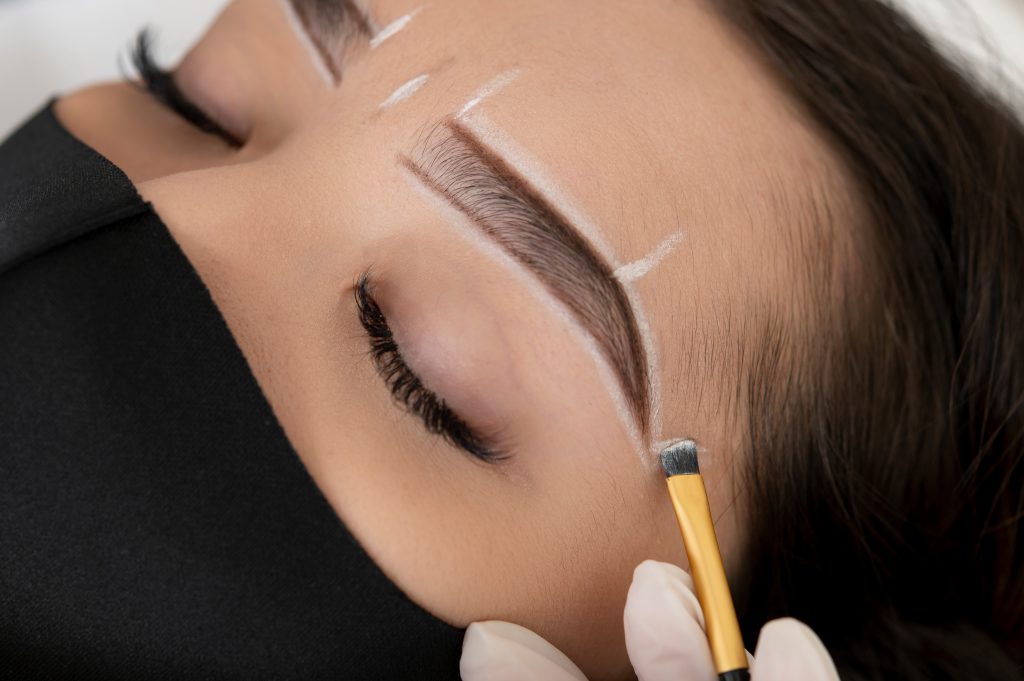
Does permanent makeup for eyebrows disappear?
While the term “permanent makeup” might suggest that the results are truly permanent, the pigments used in eyebrow tattooing can fade over time. Permanent makeup for eyebrows typically lasts for a few years, but the exact duration varies from person to person based on factors such as skin type, lifestyle, and the techniques used during the procedure.
Several factors contribute to the gradual fading of permanent eyebrow makeup:
- Natural Skin Regeneration: The outer layer of the skin, the epidermis, undergoes a continuous cycle of shedding and renewal. As new skin cells replace old ones, the pigments from the permanent makeup may gradually fade.
- Exposure to UV Rays: Sun exposure can accelerate the fading of pigments in permanent makeup. Sunscreen and sun protection are recommended to help preserve the longevity of the color.
- Skin Type: People with oilier skin may experience faster fading compared to those with drier skin. Oily skin can cause the pigments to break down more quickly.
- Technique and Pigment Quality: The skill of the technician performing the procedure and the quality of the pigments used can influence the longevity of the results. High-quality pigments and precise application techniques may result in longer-lasting effects.
- Lifestyle Factors: Lifestyle choices, such as exposure to chlorinated water, use of exfoliating skincare products, and certain medications, can affect the retention of pigments.
Despite the gradual fading, permanent makeup doesn’t completely disappear. Instead, it may lighten over time. To maintain the desired color and shape, individuals often opt for touch-up sessions every 1-3 years, depending on their needs and preferences.
It’s essential to choose a skilled and experienced technician, follow proper aftercare instructions, and be aware of factors that can impact the longevity of permanent makeup. Before deciding to undergo the procedure, individuals should have a thorough consultation with a qualified professional to discuss expectations and ensure a positive outcome.
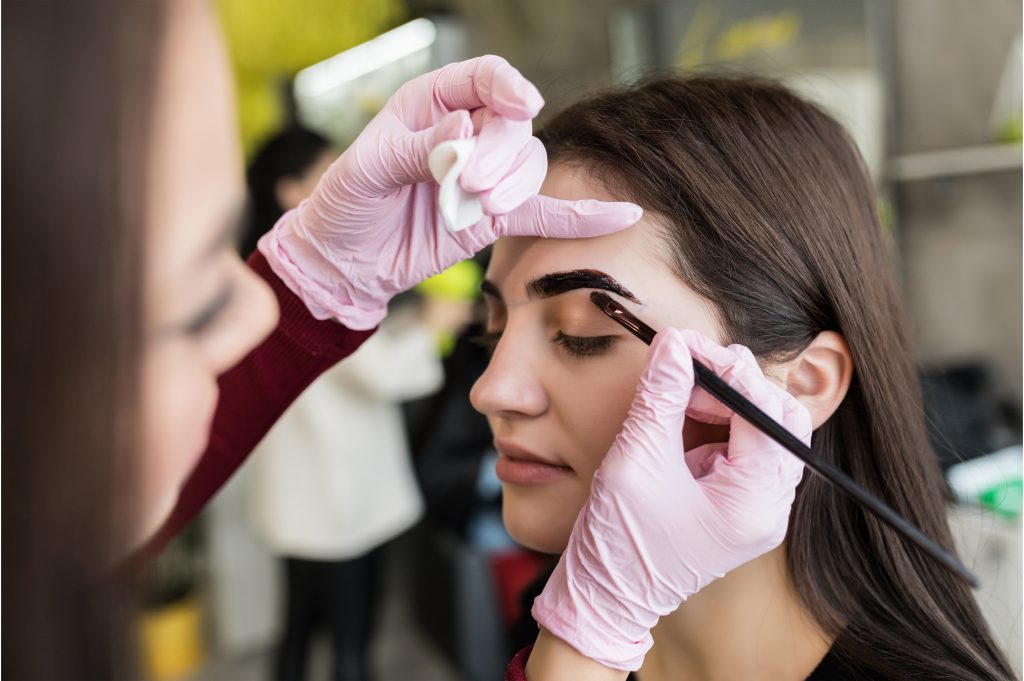
Care after permanent makeup for eyebrows?
Proper aftercare is crucial to ensure the best results and longevity of permanent makeup for eyebrows. Here are some general care guidelines to follow after getting permanent eyebrow makeup:
- Avoid Touching:
- Resist the temptation to touch or rub your newly tattooed eyebrows. Touching can introduce bacteria and disrupt the healing process.
- Keep the Area Clean:
- Gently clean the eyebrow area with a mild, fragrance-free cleanser and water. Use a clean cotton pad or Q-tip to avoid any irritation.
- Apply Recommended Ointment:
- Your technician may provide you with an ointment or healing balm. Apply it as directed to keep the eyebrows moisturized and aid in the healing process.
- Avoid Water Exposure:
- Avoid direct water exposure to the eyebrows for the first few days. This includes avoiding swimming pools, hot tubs, saunas, and excessive sweating.
- No Sun Exposure:
- Protect your eyebrows from direct sunlight, as UV rays can fade the pigments and irritate the healing skin. Use a wide-brimmed hat or sunglasses if necessary.
- Avoid Makeup and Skincare Products:
- Avoid applying makeup or skincare products directly on the treated area until it has fully healed. This includes avoiding eyebrow pencils, powders, and creams.
- No Scratching or Peeling:
- Do not scratch or peel the scabs that may form during the healing process. Let them naturally fall off.
- Limit Physical Activities:
- Avoid strenuous physical activities, such as heavy exercise, that may cause excessive sweating during the initial healing period.
- Follow Up with Touch-Ups:
- Schedule and attend any follow-up appointments or touch-up sessions recommended by your technician. These sessions help refine the results and address any areas that may need additional pigment.
- Be Patient:
- Allow time for the healing process. It may take several weeks for the pigments to settle and for the full results to become apparent.
Always follow the specific aftercare instructions provided by your technician, as these may vary based on the technique used and individual factors. If you experience any unusual redness, swelling, or signs of infection, consult with your technician or a healthcare professional promptly.
Remember that healing times can vary, and individual responses to the procedure may differ. Following proper aftercare guidelines increases the likelihood of achieving the desired and long-lasting results.
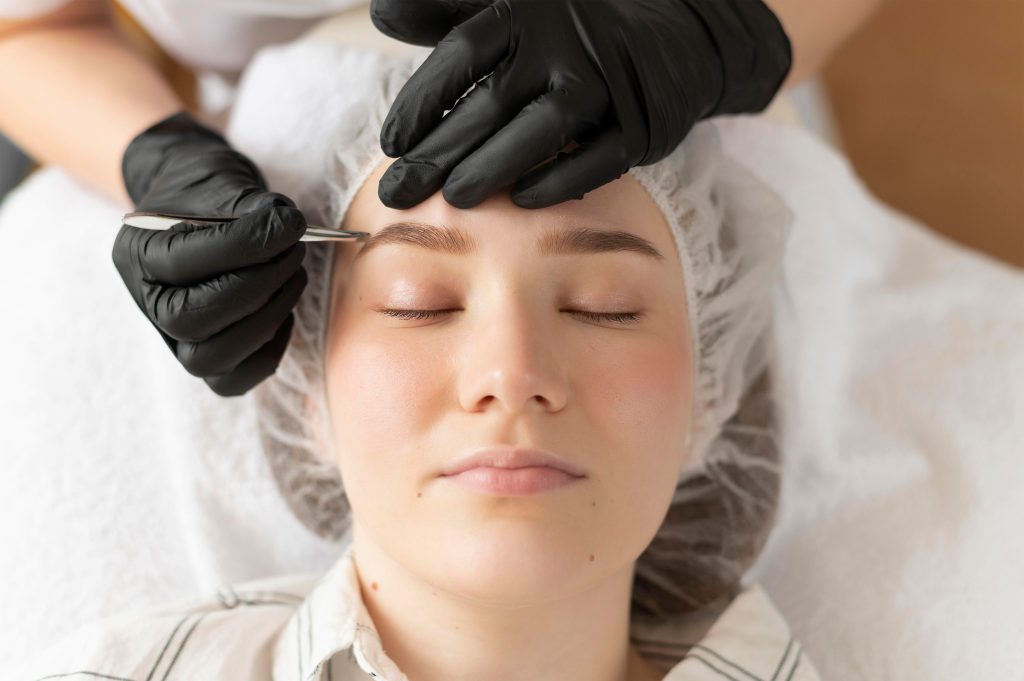
What are the best ingredients for permanent eyebrow makeup?
The ingredients used in permanent eyebrow makeup are crucial for achieving long-lasting and satisfactory results. It’s important to note that the formulations can vary among different brands and practitioners. However, here are some common and key ingredients found in quality permanent eyebrow makeup products:
- Pigments:
- High-quality pigments are fundamental for achieving natural and lasting color. Iron oxide pigments are often used in permanent makeup because of their stability and minimized risk of allergic reactions. Pigments come in various shades to match different hair colors and skin tones.
- Glycerin:
- Glycerin is a moisturizing agent that helps keep the skin hydrated during and after the tattooing process. It aids in preventing the pigments from drying out and flaking off.
- Isopropyl Alcohol:
- Isopropyl alcohol is commonly used for disinfection purposes during the procedure. It helps ensure a sterile environment, reducing the risk of infection.
- Distilled Water:
- Distilled water is used to dilute pigments and create the desired consistency for application. Using distilled water helps prevent impurities or contaminants that may be present in tap water.
- Ethanol or Witch Hazel:
- Ethanol or witch hazel may be added to the pigment mixture for their antiseptic properties. They can help cleanse the skin and prevent infection during and after the procedure.
- Propylene Glycol:
- Propylene glycol is often used as a carrier for pigments. It helps the pigments spread evenly and promotes smooth application.
- Hydrogen Peroxide:
- Hydrogen peroxide may be used to stabilize pigments and prevent them from degrading over time. It also helps maintain the color intensity of the pigments.
- Demineralized Water:
- Demineralized water is another water source used in some formulations. Like distilled water, it helps ensure that impurities or minerals do not interfere with the pigments.
- Antioxidants:
- Some formulations may include antioxidants such as Vitamin E to help protect the pigments and promote healing.
It’s important to emphasize that the safety and effectiveness of permanent eyebrow makeup depend not only on the ingredients but also on the skill of the practitioner and adherence to proper hygiene and sterilization practices. Before undergoing the procedure, it’s recommended to research the credentials of the practitioner, ask about the ingredients used, and discuss any concerns or allergies you may have.
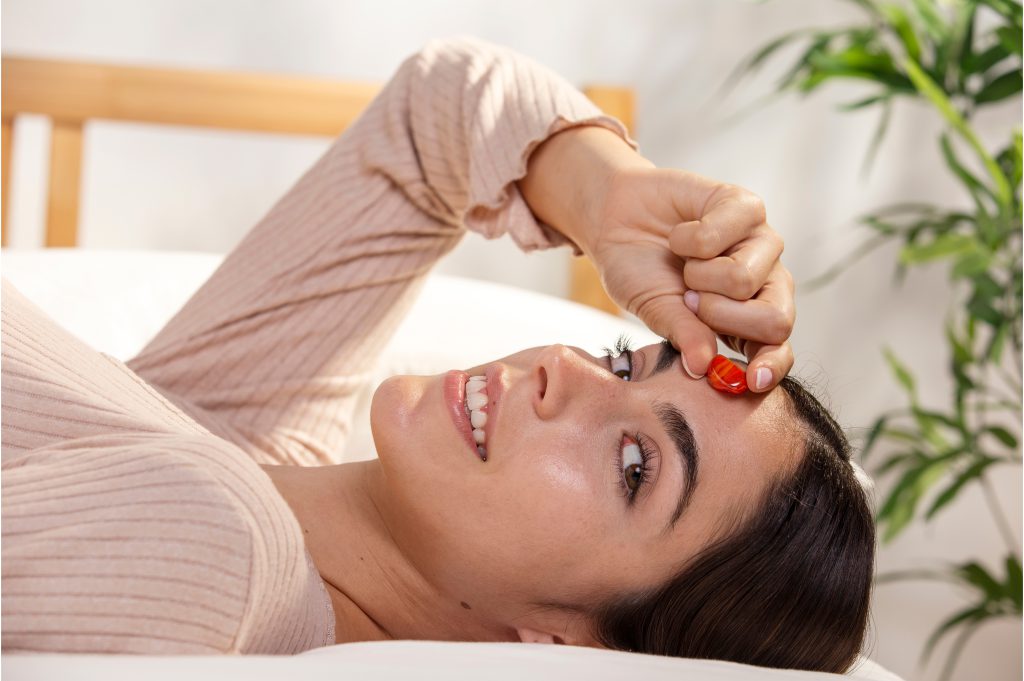
Is it important to have expertise for permanent eyebrow makeup?
Yes, expertise and skill are critically important when it comes to permanent eyebrow makeup, also known as microblading or cosmetic tattooing. The application of permanent makeup involves a certain level of artistry, precision, and understanding of facial anatomy. A qualified and experienced technician with expertise in the field can significantly impact the outcome and safety of the procedure. Here’s why expertise is crucial:
- Precision and Technique:
- A skilled technician understands the nuances of eyebrow shape, symmetry, and facial proportions. Precise techniques are essential to create natural-looking and well-defined eyebrows that complement the individual’s features.
- Color Matching:
- Expertise is crucial in selecting and customizing the right pigment colors to match the client’s natural hair color, skin tone, and personal preferences. This requires an understanding of color theory and pigments.
- Understanding Skin Types:
- Different skin types react differently to the tattooing process. An experienced technician knows how to adapt the technique and choose the right pigments based on the client’s skin type, whether it’s oily, dry, sensitive, or combination.
- Hygiene and Safety:
- An experienced professional adheres to strict hygiene standards and safety protocols to minimize the risk of infection. This includes using sterile equipment, disposable needles, and maintaining a clean working environment.
- Client Consultation:
- Before the procedure, a knowledgeable technician conducts a thorough consultation with the client. This involves discussing the client’s expectations, analyzing facial features, and addressing any concerns or contraindications.
- Experience with Different Skin Conditions:
- Skin conditions such as scars, previous tattoos, or other issues may affect the outcome of the procedure. An experienced technician is better equipped to handle various skin conditions and adjust the approach accordingly.
- Aftercare Guidance:
- A skilled professional provides comprehensive aftercare instructions to promote proper healing and long-lasting results. They guide clients on how to care for their eyebrows during the initial healing period and schedule follow-up appointments as needed.
- Corrective Work:
- In cases where clients have had previous eyebrow tattooing or microblading that did not produce satisfactory results, an experienced technician can offer corrective work to address and improve the existing appearance.
It’s crucial for individuals seeking permanent eyebrow makeup to research and choose a qualified and reputable technician. Checking credentials, viewing before-and-after photos of previous work, and reading client reviews can help ensure that the chosen professional has the necessary expertise to deliver safe and satisfactory results.
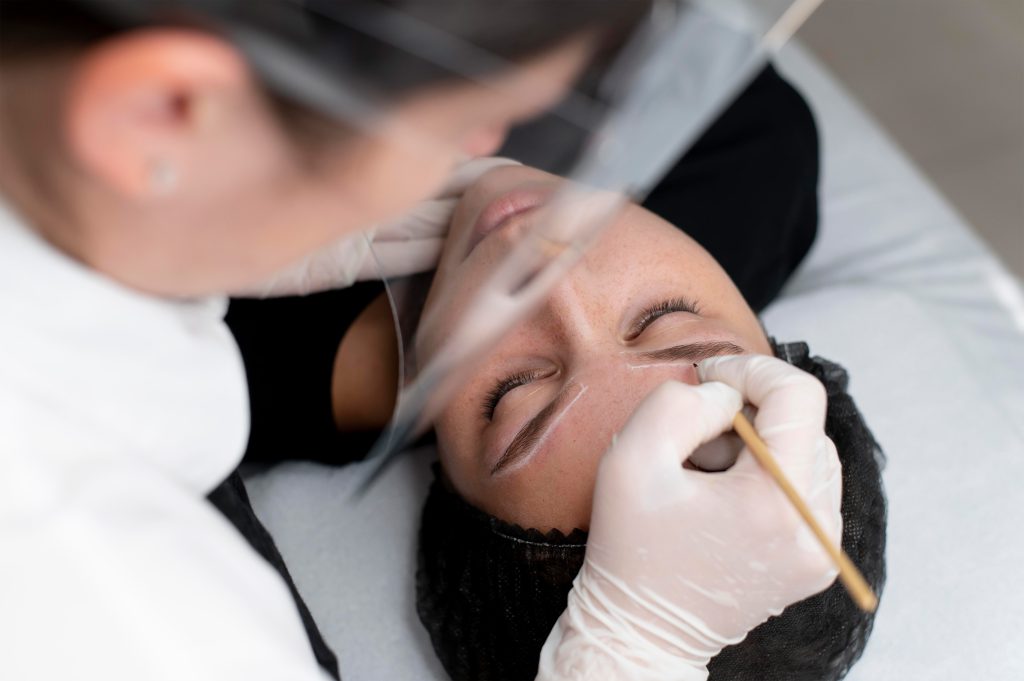
Final speech
I am Fatima Badr, a specialist in permanent makeup, in this article I tried to introduce you to many points of permanent eyebrow makeup.
I hope you liked this article and leave your comments for us
